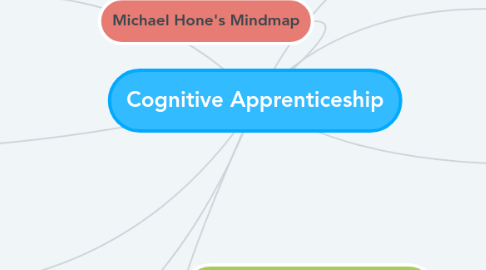Cognitive Apprenticeship
by Hone, Michael

1. Michael Hone's Mindmap
2. What makes this different from a regular apprenticeship (carpentry, masonry, etc)?
3. What sets Cognitive Apprenticeship apart is the fact that it asks the student to truly listen to their teacher. They (student(s)) need to follow their teacher and listen to each word they say, afterwards they are allowed to demonstrate their skills in real world settings.
4. Coaching is also provided while the apprentice is given time to demonstrate the skills learned.
5. Coaching can include: additional modeling as necessary, corrective feedback, and reminders
6. Why does this work? Because of the setting! Learning in a real world environment allows the teacher, and student, to demonstrate skills necessary for the job in real time, and allows the student to gain valuable experience. Without the real world context, the skills may not translate over as easily.
7. What is it?
8. Cognitive Apprenticeship is when a master of a skill teaches that skill to an apprentice.
9. By using processes such as modeling and coaching, cognitive apprenticeships also support the three stages of skill acquisition described in the expertise literature: the cognitive stage, the associative stage, and the autonomous stage (Anderson, 1983; Fitts & Posner, 1967).


